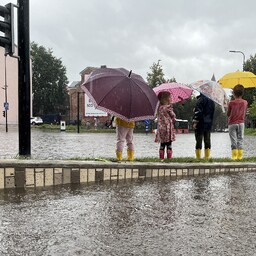Statistics show that it rains more at once in Estonia. The rainfall is becoming more intense. Experts say that cities need to make their water management more natural. For example, controlled flood areas should be created.
Professor Ottar Tamm from the University of Life Sciences says that it rains more than before. He says that the amount of rainfall has increased by four percent per decade. This means that the rains are more intense. Tamm says that this trend will continue in the future.
Warmer air holds more water. Since Estonia has become warmer, there is more water in the air. This means that the rains are more intense. Tamm explains that warmer air makes clouds larger. Larger clouds bring more rain.
Farmers are not happy because droughts are also more common. Tamm says that it does not rain at the right time or in the right place. For example, it may not rain for a month and then a lot of rain falls at once. This is not good for farmers.
Tamm says that heavy rains can cause problems in cities. For example, water may flood the streets. This makes roads impassable. Cities need to find solutions for where to put rainwater.
Tamm says that more green areas need to be created in cities. For example, rain gardens and green spaces. These help to temporarily hold water. This helps to prevent floods.
Professor Ivar Annus from Tallinn University of Technology says that water management in cities needs to be changed. He says that places need to be created where water can be temporarily stored. For example, rain gardens and park areas. These help to prevent floods.
Annus says that there are too many hard surfaces in cities. This makes it more difficult to manage rainwater. He says that more green areas need to be created. This helps to better manage water.

